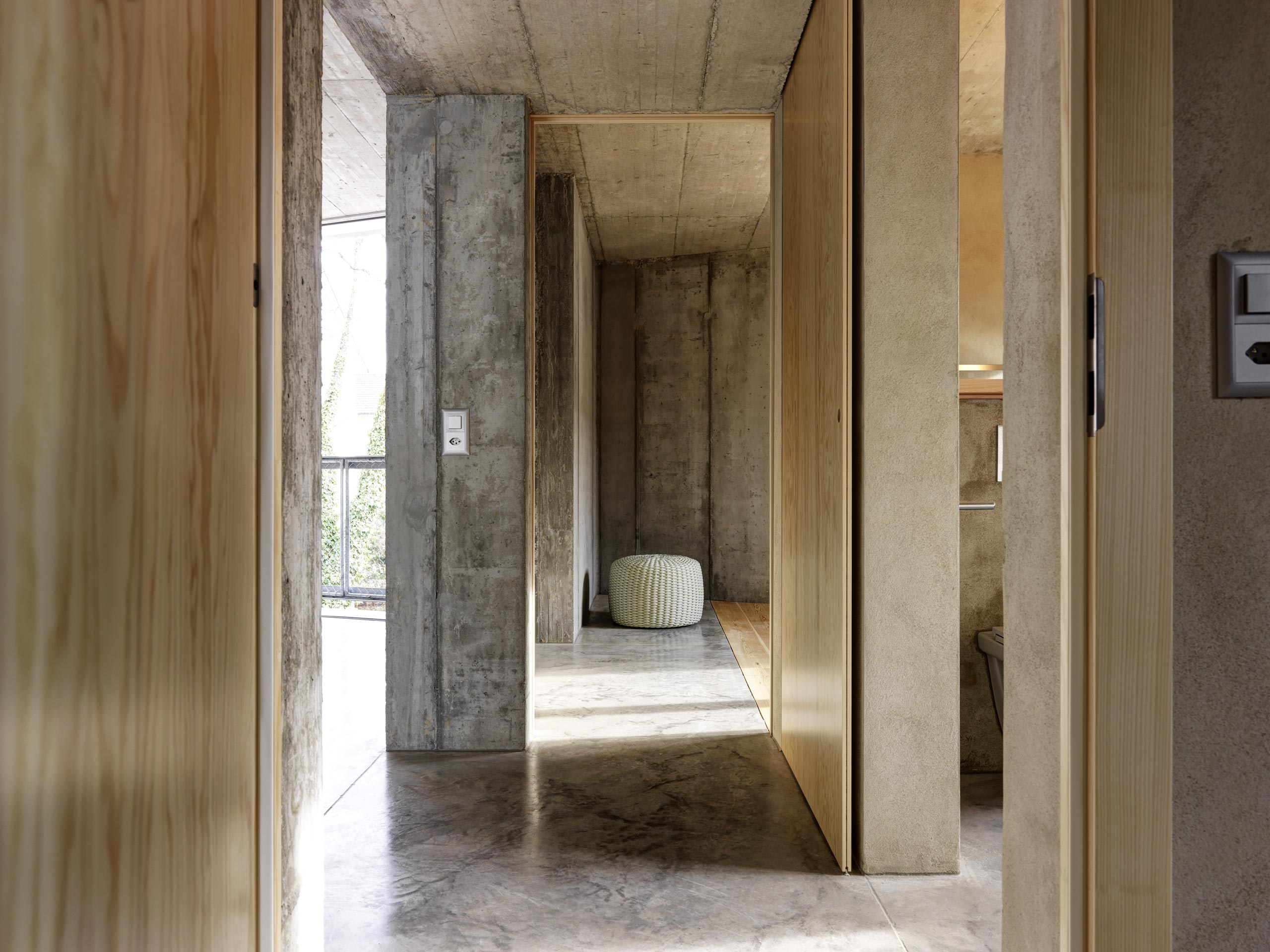Making the impossible possible: Swiss architect Gus Wüstemann has succeeded in giving housing a bit more justice.


The magic of small scale. The residential units of Langgrütstraße appear larger than they actually are, due to successful view guides.
Of course, it's always nice when magnificent buildings shine in large pictures in magazines and journals. This stimulates fantasies, awakens desires and mobilizes yearnings. But even more beautiful are those architectures that become tangible, in that they are affordable and, in the end, do not have to remain simply a dream for many people.


Limitless beauty. Interior and exterior spaces merge to form a spatial unit.
The Swiss architectural firm Gus Wüstemann Architects was commissioned by the I+B Baechi Stiftung to precisely create such architecture in Zurich: affordable living space that does not compromise quality. Gus Wüstemann accepted the challenge and, with the residential building at Langgrütstrasse 107, developed an exemplary project that proves that, with targeted interventions in light and space and a simultaneous reduction in standards, generous living spaces are possible - without any additional economic expense. "In today's world, a change in thinking is needed. Sustainability in the sense of less for the individual but more for the community, is becoming increasingly important. With this housing project we show how, in architecture, shifting focus from connotations and standards to space moment and quality, makes this very thing possible" Gus Wüstemann explains his design approach.


Room quality as the measure of all things: It's not the size that counts, but how the room works - that's what matters.
In the middle of a settlement structure of simple row buildings of the 1950s, arranged at right angles to each other, characterized by the greenery through with generously sized gardens. The building, made of solid concrete with an organic formwork, houses four 60-square-meter, three-and-a-half-room apartmens and five 90-square-meter-four-and-a-half-room apartments, reflecting the new spaciousness. All are oriented towards the south, where there is a large communal terrace. Sun and light generally take on an important part in this spatial choreography: in the two courtyards, "cut out" of the building structure, the living spaces float like bridges and catch both the rays of the morning and the evening sun. The views through the living spaces give the impression that they are actually outdoor spaces - this clever architectural arrangement creates an incredible moment of grandeur in an inherently small space.


With refined details and only fragmentary space-dividing elements, the room always remains in a state of flow.
Even the periphery of the living space is permeable and transcends the room. This is made possible by the dissolution of the space-defining elements which in this form are not perceived as partitions but as communicative protagonists. The human being is included in this mass topography . It is defined by a space-defining, customized design of all areas - from the wardrobes to the living room bench to the kitchen. For example, the bathroom of the four-and-a-half-room apartment is separated from the common space by a sliding door that never touches the floor. The concrete bench that grows out of the bathroom wall creates a place, a moment of transition, right at the entrance to the sliding bathroom door. The space continues to flow as a continuum of community, creating intimacy.


All rooms with different functions were included in the seamless flow of space.
This flow of space is encountered as soon as one enters the apartment: in each case the entrance is compressed by a massive concrete beam. One is guided and the moment of entry is captured. The concept of flow is also echoed by the continuous concrete floor, flowing into all bedrooms as a fragment of the communal, but then merges into a wooden surface on the bedroom floor as a new level of intimacy. Gus Wüstemann manages to use a simple architectural gesture to create openness, continuity, and thus an unobtrusive spatial expanse that transforms the compact living units into spacious living environments.
Originally written by Barbara Jahn
Copyright for all the pictures: © Bruno Helbling